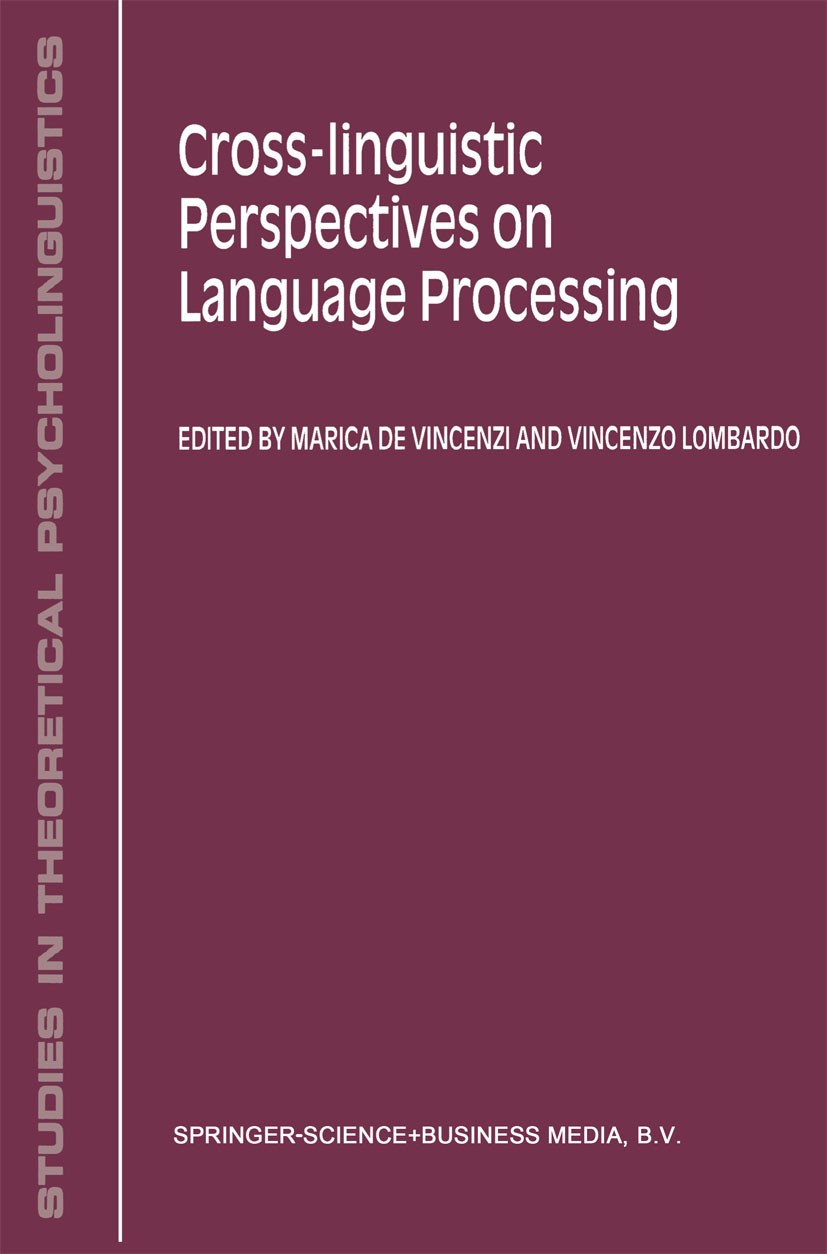| 书目名称 | Cross-Linguistic Perspectives on Language Processing |
| 编辑 | Marica Vincenzi,Vincenzo Lombardo |
| 视频video | http://file.papertrans.cn/241/240356/240356.mp4 |
| 丛书名称 | Studies in Theoretical Psycholinguistics |
| 图书封面 |  |
| 描述 | Recent studies in psycho linguistics have ranged through a variety of languages. In this trend, which has no precedent, studies in language processing have followed studies in language acquisition and theoretical linguistics in considering language universals in a broader scope than only in English. Since the beginning of the century, studies in language acquisition have produced a vast body of data from a number of Indoeuropean languages, and the emphasis on the universal has preceded the emphasis on the particular (see (Slobin 1985) for a review). Nowadays, the research in the field advances by means of a continuous linking between the cross-linguistic uniformities and the individual language influences on development. The level of language universals is continuously refined as the data from a number of languages contribute to the elaboration of a more distinctive picture of the language of children. The first cross-linguistic studies in theoretical linguistics appeared at the end of the seventies. Within the Chomskian paradigm, the reference to the Romance languages caused a shift from a rule-based toward a principle-based formalism (Chomsky 1981, 1995); within alternative theor |
| 出版日期 | Book 2000 |
| 关键词 | Parsing; language; linguistics; psycholinguistics |
| 版次 | 1 |
| doi | https://doi.org/10.1007/978-94-011-3949-6 |
| isbn_softcover | 978-1-4020-0292-2 |
| isbn_ebook | 978-94-011-3949-6Series ISSN 1873-0043 Series E-ISSN 2215-1788 |
| issn_series | 1873-0043 |
| copyright | Springer Science+Business Media Dordrecht 2000 |
 |Archiver|手机版|小黑屋|
派博传思国际
( 京公网安备110108008328)
GMT+8, 2025-11-12 16:30
|Archiver|手机版|小黑屋|
派博传思国际
( 京公网安备110108008328)
GMT+8, 2025-11-12 16:30


